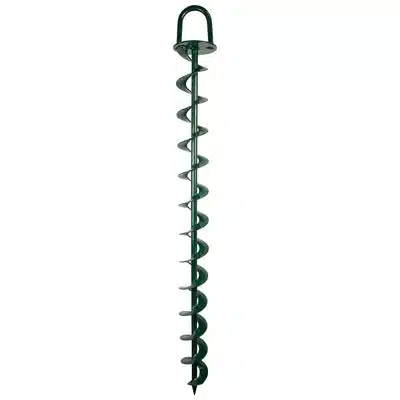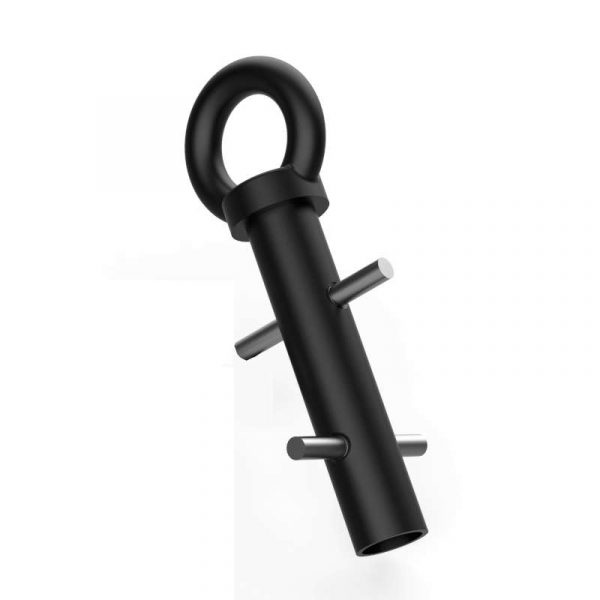Exactly How Durable Earth Anchors Job: A Comprehensive Overview to Soil Anchoring Solutions
Sturdy Earth supports play an essential role in supplying security and support in various building and construction applications. By installing deeply into the ground, they resist vertical and side forces properly. Various kinds of anchors deal with numerous dirt problems, making them flexible. Recognizing their auto mechanics and setup methods is vital for taking full advantage of performance. What factors affect their performance, and exactly how do they contrast to conventional methods? The responses might amaze you.
Understanding Heavy-Duty Earth Anchors
Durable Earth supports work as necessary parts in numerous building and landscape design jobs, offering security and assistance in challenging dirt problems. These anchors function by being embedded into the ground, where they withstand upright and side forces. Their style enables protected add-on to structures, ensuring they continue to be secured against dirt motion or exterior loads.The effectiveness of durable Earth anchors mainly depends on the type of dirt and the support's setup deepness. Correct setup strategies are crucial, as they figure out the support's holding ability. Ecological variables, such as moisture and freeze-thaw cycles, can likewise impact performance.These anchors are frequently used in applications ranging from safeguarding fences and keeping walls to stabilizing momentary structures throughout damaging weather conditions. Comprehending the principles behind heavy-duty Earth anchors is vital for professionals seeking to boost the resilience and safety and security of their tasks.
Kinds of Heavy-Duty Earth Anchors
Different sorts of durable Earth supports are created to meet specific demands based upon soil problems and task requirements. Helical anchors, featuring screw-like blades, work in softer soils, providing high load abilities and very easy installment. Driven anchors, which are hammered right into the ground, are appropriate for rocky terrains and supply instant load support. Tie-back anchors are generally used in retaining wall surface applications, enabling for side support by securing into the ground at an angle. An additional kind is the cast-in-place anchor, suitable for concrete applications, as they are incorporated into structures for boosted security. Dirt screw supports are versatile alternatives that can be used in various dirt types, supplying reputable stress and compression capabilities. Each type offers distinct applications, making certain stability and safety and security in building and landscape design projects. Comprehending these alternatives allows for informed decisions in choosing the appropriate Earth anchoring solution.
The Mechanics of Soil Anchoring

Understanding the auto mechanics of soil anchoring calls for an assessment of various sorts of Earth anchors and their installation methods. Each anchor type provides special features that influence its performance in various dirt conditions. Correct installation methods are essential for maximizing the anchoring system's security and performance.
Kinds Of Earth Anchors
Earth anchors, crucial components in dirt anchoring systems, can be found in numerous types, each made for specific applications and dirt conditions. The most typical types consist of screw supports, which are turned right into the ground, providing solid side resistance. Helical supports include blades that permit for efficient installation in various dirt kinds, making them ideal for both permanent and momentary applications. Driven supports, commonly made from steel, are hammered into the dirt and work in rocky or thick environments. Auger anchors utilize a helical style to promote installation in softer dirts. Lastly, plate anchors consist of a level plate hidden flat, dispersing lots over a larger area, perfect for applications requiring high lots abilities in cohesive dirts.
Setup Methods Described
Proper installation strategies are crucial for the performance of soil anchoring systems. The procedure commonly starts with website analysis, confirming the picked place can support the support's tons. After identifying the correct support kind, proper opening depth and angle need to be established. The installment includes driving the support right into the ground utilizing specialized equipment, such as hand-operated or hydraulic drivers, to achieve ideal embedment. Post-installation, tensioning the anchor is critical to guarantee stability; this is typically confirmed with tons screening. Furthermore, bordering soil problems ought to be checked to avoid variation. Following these methods not just enhances the anchor's efficiency but likewise lengthens its life-span, offering reliable support for different applications.
Applications of Heavy-Duty Earth Anchors
While sturdy Earth anchors are often associated with building and landscaping, their adaptability reaches a range of applications throughout various sectors. In civil design, they supply important support for keeping wall surfaces, making sure security in locations vulnerable to dirt disintegration. The aquatic industry utilizes these supports for securing docks and marinas, stopping motion caused by currents and tides. In addition, in the telecommunications industry, heavy-duty Earth anchors are substantial for stabilizing cell towers and various other high structures versus wind forces. Agricultural applications additionally benefit, as these anchors can secure structures like greenhouses and livestock secure fencing, guaranteeing they endure rough climate condition. Additionally, in renewable resource projects, such as wind farms, Earth supports play a vital duty in securing wind turbine structures, improving overall safety and look at here now performance. This wide range of applications highlights the flexibility and integrity of heavy-duty Earth anchors throughout various areas.
Benefits Over Traditional Anchoring Techniques
Conventional anchoring methods have long been depended upon for security, durable Earth supports use significant benefits that boost efficiency and effectiveness. One major benefit is their superior load-bearing ability, which permits them to withstand higher forces without failure. This strength makes them perfect for requiring applications, such as in building and construction and energy installations.Additionally, durable Earth anchors are made for much deeper installation, providing higher stability in different soil problems, consisting of loose or sandy soils. Their resistance to corrosion and ecological aspects guarantees a much longer life-span and lowered maintenance costs contrasted to conventional methods.Moreover, these anchors can be set up with marginal disruption to the surrounding area, maintaining the honesty of the landscape. On the whole, heavy-duty Earth supports provide a efficient and trusted remedy for anchoring requirements, exceeding the limitations usually related to traditional anchoring methods.
Installment Process and Best Practices
The setup process for soil anchoring remedies begins with comprehensive preparation and website evaluation to guarantee peak performance. Following this, a detailed installation overview offers clear instructions for effective execution (tensile load anchors). Sticking to these best methods is essential for attaining resilient and trusted anchoring results
Prep Work and Site Analysis
Efficient prep work and detailed website analysis are important action in the installation of dirt anchoring remedies. Before setup, the soil kind must be analyzed to establish its bearing capability and suitability for anchoring. Conducting a geotechnical survey can provide vital info regarding soil make-up, moisture levels, and possible ground movement. Furthermore, determining existing frameworks, greenery, and utilities is essential to avoid disturbance throughout setup. The area needs to be removed of debris and challenges to assure risk-free access for tools. Weather need to also be monitored, as damaging problems can impact both safety and security and installment efficacy. By thoroughly preparing the website and examining all appropriate elements, the probability of effective anchor efficiency is substantially boosted.
Step-by-Step Setup Overview
A thorough installation process is vital for attaining perfect efficiency of dirt securing solutions. The setup begins with selecting the ideal anchor kind and guaranteeing the website is clear of particles. Next off, correct opening placement is determined based on tons needs. Once the location is established, holes are pierced to the specified deepness and size making use of the proper tools. The support is then put right into the hole, seeing to it it is lined up properly. After securing the anchor, soil is backfilled and compacted to enhance stability. It is vital to adhere to manufacturer standards throughout the process. A post-installation assessment validates that the anchors are effectively located and working as intended, offering trustworthy assistance for the desired application.

Maintenance and Assessment of Earth Anchors
Normal upkeep and assessment of Earth supports are necessary for ensuring lasting performance and stability. Routine checks permit the very early discovery of problems such as rust, loosening, or dirt motion. Assessors must try to find signs of corrosion or destruction on the support elements, particularly at the link factors. Additionally, the bordering soil ought to be assessed for erosion or adjustments in wetness content, which can affect anchor effectiveness.It is a good idea to establish a routine assessment timetable, ideally a minimum of once a year, depending upon ecological problems. Throughout inspections, all visible elements should be cleaned to remove dust or particles that can conceal prospective problems. Any indications of distress, such as tilting frameworks or unusual settling, need to prompt immediate evaluation. Correct paperwork of assessments can help in monitoring support efficiency in time and help with prompt upkeep activities, ensuring the anchors stay reputable and functional.
Frequently Asked Questions
What Materials Are Heavy-Duty Earth Anchors Typically Made From?
Sturdy Earth supports are generally constructed from resilient products such as galvanized steel or stainless steel, ensuring toughness and resistance to deterioration. These materials give resilient support and security in different dirt conditions and applications.
How Do Dirt Problems Impact Support Performance?
Dirt conditions substantially affect support performance. Aspects such as soil type, wetness web content, and compaction affect the anchor's hold and stability, with natural dirts usually offering much why not try here better resistance than loosened or sandy soils, affecting overall efficiency.
Can Heavy-Duty Earth Anchors Be Recycled After Removal?
Sturdy Earth supports can be reused after removal, given they are checked for damages and wear. Correct cleansing and upkeep enhance their long life, guaranteeing reliable efficiency in subsequent installations when conditions enable secure reinstallation.
What Are the Environmental Impacts of Making Use Of Earth Anchors?
The environmental impacts of utilizing Earth anchors consist of prospective dirt additional info disturbance, interruption of neighborhood ecosystems, and possible contamination of groundwater. Nonetheless, if made use of sensibly, their benefits usually outweigh these issues, promoting stability in various applications.
How Do I Pick the Right Anchor for My Job?
